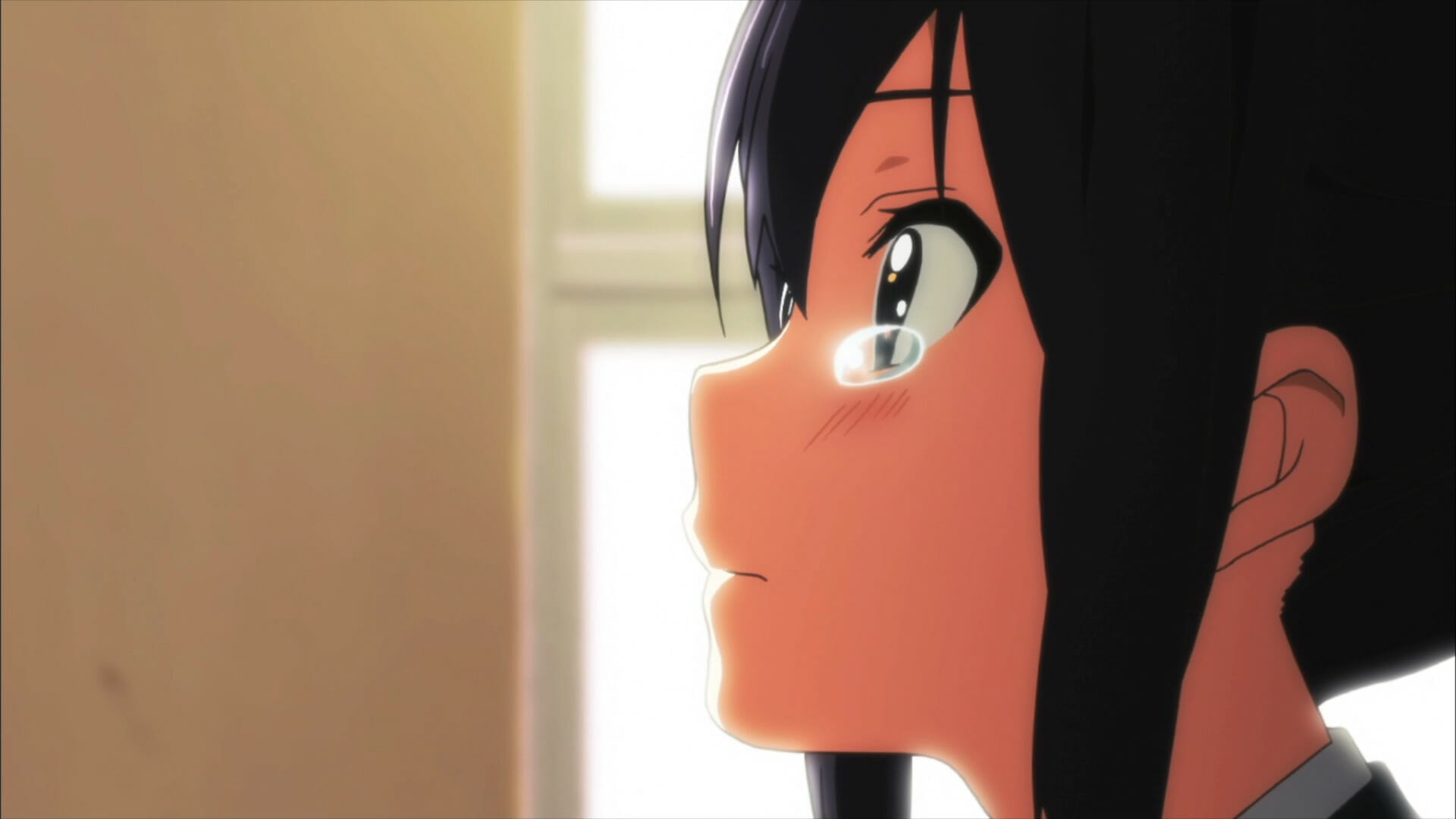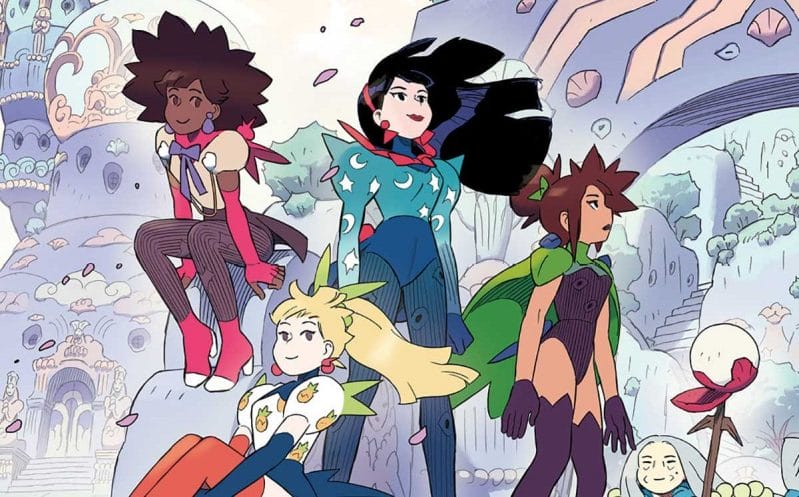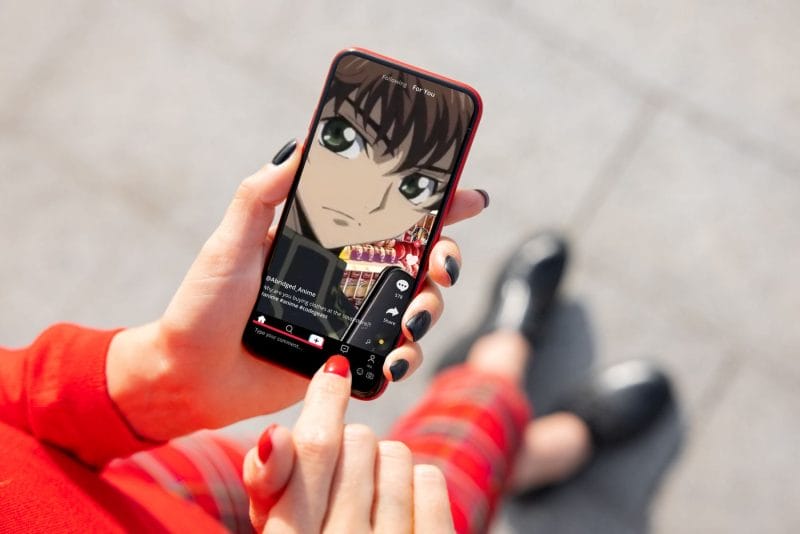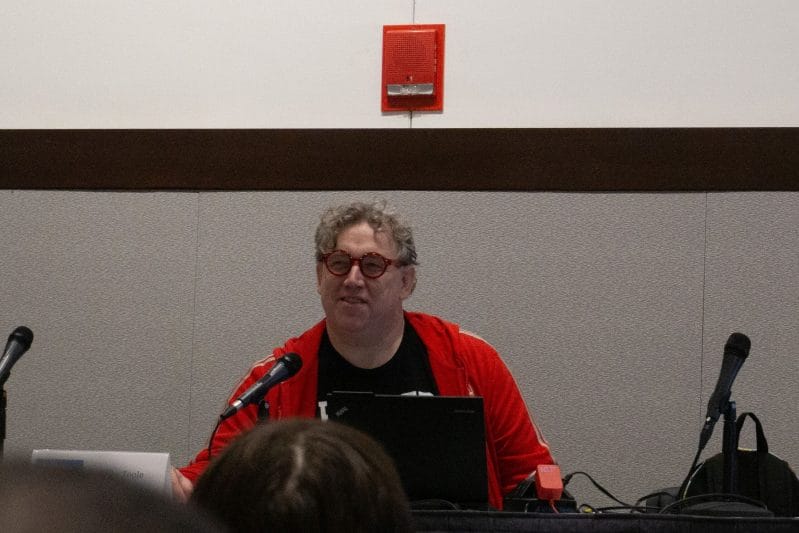K-On! has had a deeply important influence on modern anime aesthetics and themes, and played a major role in launching the careers of those involved. Particularly, director Naoko Yamada, who is now considered almost legendary among contemporary creators. Similarly, Kyoto Animation is maybe one of the best-known and most-beloved studios out there, with both their television and film anime considered favourites and classics by many.
There’s no shortage of love for K-On! today, especially when compared to similar shows from its time (sorry, A-Channel fans). Yet, it used to be the case that even a begrudging respect for the title’s impact was hard to come by. Anime forum regulars of the bygone era of the early 2010s would often look down on KyoAni as a cynical cuteness machine, hypnotising people into unhanding their wallets and their dignity in equal measure.
While K-On’s artistry may not have been immediately recognised, twelve years on, the impact this little slice-of-life series has had on industry, fandom culture, and the hearts of many viewers—including mine—cannot be overstated. To put it bluntly, if the anime industry wants to thank anyone for all the money I’ve wasted on their myriad shows over the years, they have to thank K-On!
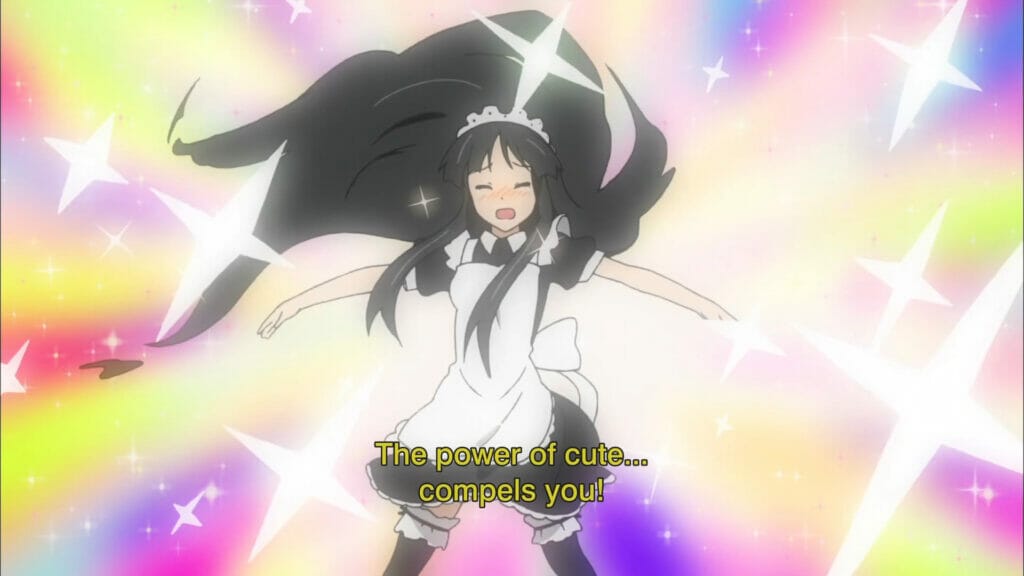
Are you aware of what the Japanese slang term “moe” means? For that matter, is anyone? Though a nebulous concept, it’s often been used to refer to comforting anime where cute character designs are king. Less in the way that a magical girl show like Cardcaptor Sakura is cute, moe is moreso used to refer to slice-of-life shows with male target demographics like New Game!, Is The Order a Rabbit?, and Lucky Star. That said, though, the real difficulty in explaining moe, as a concept, is that no one can agree on what it actually means (ironically, this in itself is a running joke within the dialogue of Lucky Star).
Literally, the term is derived from the Japanese phrase moeru, which can describe a burning passion. But to me, a fifteen-year-old kid who knew little about anime beyond Dragon Ball Z and Pokémon, Moe is the guy on The Simpsons (whose moe merits would make a wonderful discussion for an entirely different time).
The concept of “Moe anime” as a genre of its own, rather than a simple aesthetic, was relatively new when K-On! came out and, in many ways, the series helped codify what we now associate with the term. What K-On! did quickly became the source of much backlash in its time, as fans of more adventurous shows struggled to find the appeal of a music series that was more about its characters enjoying their lives than competing with each other and clashing over their relationships. Its existence wasn’t as simple as being a popular show that they didn’t get; it was the beginning of a major evolution in anime that they avidly rejected as a load of boring nothingness.
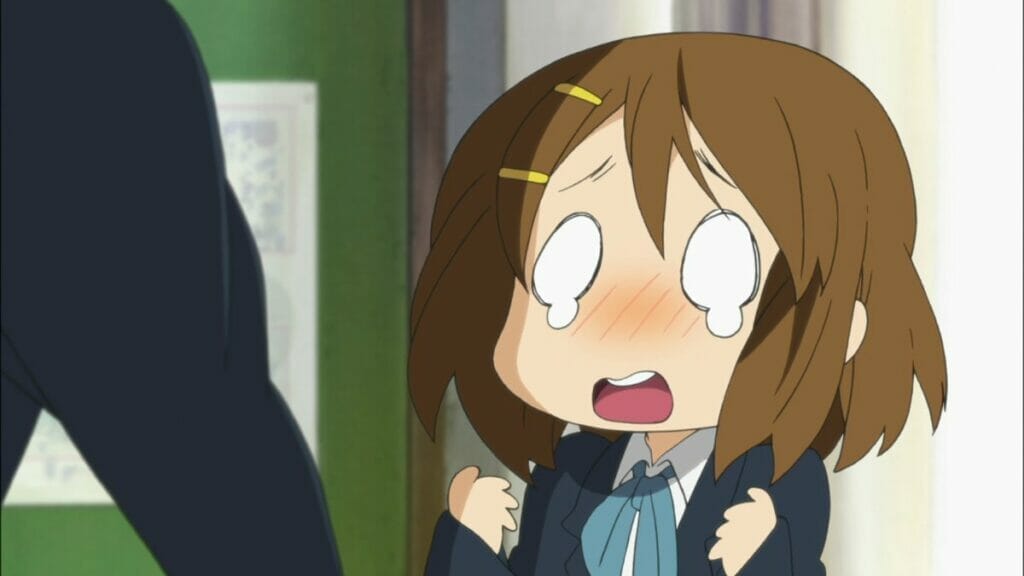
Productive discussion, such as that in Patrick W. Galbraith’s The Moe Manifesto, was nowhere to be found in a MyAnimeList forum thread. This only added to the confusion I felt when I came across an English dubbed episode of K-On!—not as an anime fan, but purely by chance, when I noticed an anime preview disc bundled with the 2011 Japan special issue of Australian gaming magazine Hyper.
The preview episodes got me hooked. The appeal could be likened to that of the golden age of The Simpsons, with the bonus that it appealed to my love of rock music. It has the sitcom atmosphere with a cast of goofy loveable dorks, perfect comedic timing, and a rich heart of gold at the centre of the cake. K-On! won me over without any expectation of what it would be, any context of the genre discourse it was generating, and with a knowledge of anime that barely extended beyond kid-focused shows like Yu-Gi-Oh! and Crush Gear, and the one episode of Sorcerous Stabber Orphen I’d inexplicably watched on a different anime sampler disc years before.
Even with no concept of moe, a phrase that the dub even localised out of one scene, I was such a big fan of what I saw on that sampler disc that I went out and bought all the DVDs, happy to cough up thirty Australian dollarydoos for a meager three or four episodes of joy. Aussie distributor Madman even sweetened the deal with this fruity pink number to house all four volumes of Season one.

I couldn’t have asked for a more perfect introduction to anime. K-On! Is a fantastic show that appealed to me like nothing else, and doubled as an easy intro to some of the medium’s defining modern day traits. The first season is a triumph in its own right, taking an adequate four-panel gag manga and turning it into a phenomenon. Yukiko Horiguchi’s designs give a new energy to Kakifly’s characters, and the anime original content makes the comedy far more punchy than the walls of the four panels would allow. Incredible song composition breathed life into the rock-band premise, as did the impeccably designed real life instruments like Yui’s Gibson Les Paul and Azusa’s Fender Mustang.
The girls bond over their music, coming to appreciate their conflicting personalities and approaches to performing in their band, Houkago Tea Time. Yui develops a passion for the guitar to overcome her worries about drifting through life, Ritsu channels her manic energy to create rollicking rhythms on the drums, and Mio overcomes her shyness as she relishes in being the important but understated bass player. Tsumugi’s confident keyboard technique is given a new twist by the inspiration she gets from the other band members, and Azusa comes out of her shell as a guitarist while beginning to appreciate the company of her more extroverted bandmates.
Out of all of them, though, it would be Yui and Azusa’s struggles I’d connect to the most. Granted, the fact that Yui has the same model of guitar often played by Slash of Guns N’ Roses and Ace Frehley of Kiss certainly helped me admire her that little bit more.
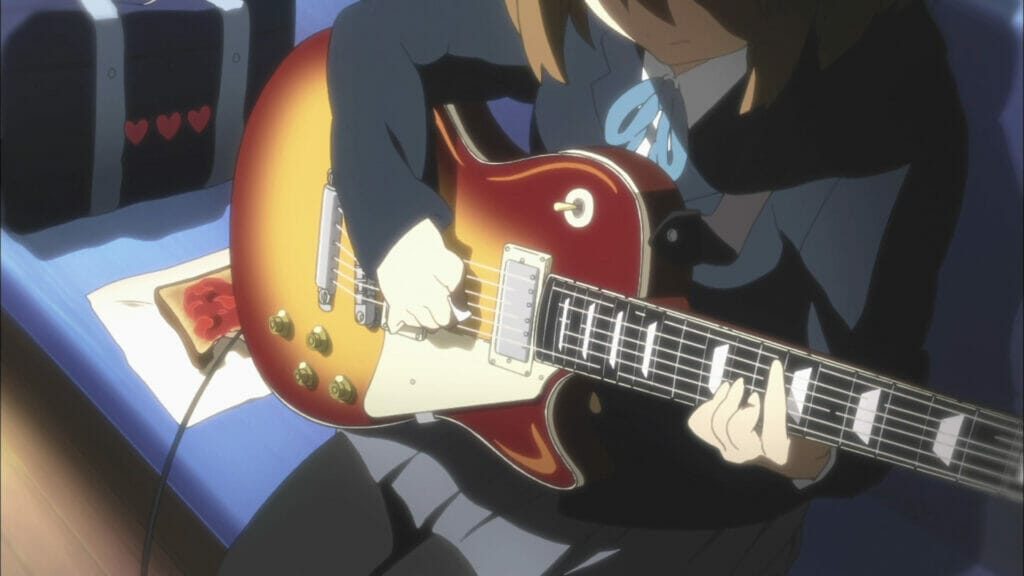
Anime original content in manga adaptations can be contentious, though most of what people love about K-On! can be attributed to material that only exists in the anime adaptation. This is accentuated by the show’s second season, and my first fansubbed anime, creatively titled K-On!! Individual scenes and even entire episodes can be totally original. Azusa bonding with Jun and Ui, the club’s pet turtle Ton-chan, the anxieties that the girls face ahead of graduation… so much was added and changed that it’s more accurate to say that the anime exists in an entirely different continuity.
This is furthered by the increasingly dramatic focus found in the second season. Not in terms of angst or tense confrontations, but a subtle feeling of uneasiness as the graduating third years struggle to decide their path in life after school and to maintain the fun in their lives that the band has brought them. Even years after leaving school, I still think back to the final moments of the series whenever I’m facing a crossroads in my life. Episode 24’s graduation song, Tenshi ni Fureta yo! (Touched by an Angel!) is a perfect moment of closure, as the girls finally find the words to show their appreciation to younger guitarist Azusa.
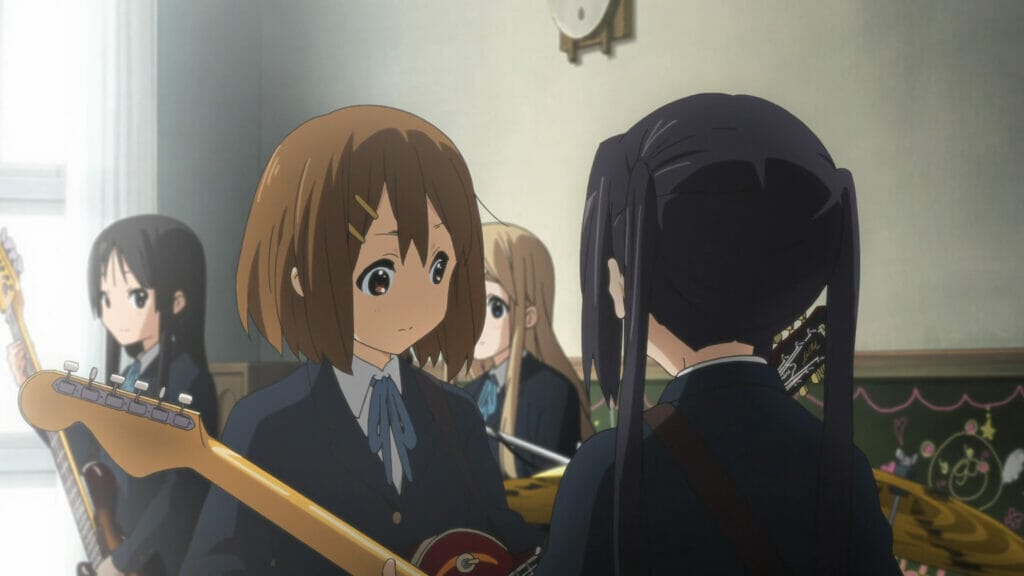
Even with sold out concerts and a #1 single on Japan’s Billboard Hot 100 charts, KyoAni made a point to end the series on a strong note, rather than to maximise its success. Instead of building on the shaky ground of the ongoing College and High School manga sequels, K-On! The Movie is an almost entirely original coda that expands on the season two ending, going as far as to include a new recording of the graduation song for Azusa. Instead of showing Azusa dwelling on her emotions until the girls surprise her with the song, we see the perspective of the graduating third years as they worry about their futures and how best to thank her.
Though it is heavily focused on in trailers, the trip to London is only the middle act of a film that’s mainly about saying goodbye. K-On! The Movie is a wonderful microcosm of everything good about K-On!, a timeless story that fills me with nostalgia for the best times of my life and the starting point of Naoko Yamada’s acclaimed movie directing career. Though her films are generally about more difficult experiences of moving on from adolescence, it was K-On! The Movie that laid the foundation for what Yamada would become.
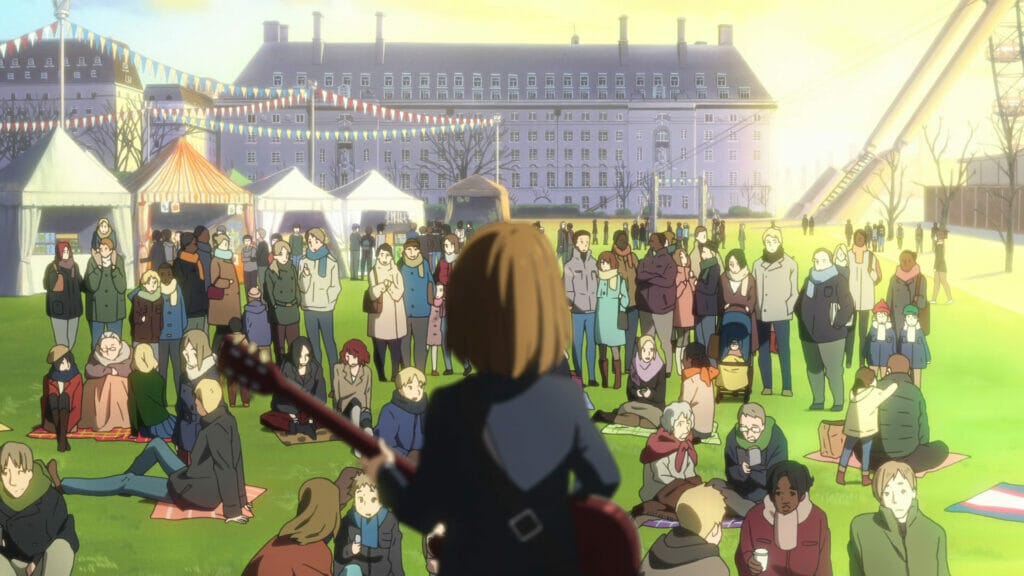
Though I’d already watched the fansub months before, I was overjoyed to see the movie come to Australian cinemas by way of a 2012 Japanese film festival in Sydney. Then I saw Tamako Love Story at the same Japanese film festival in 2014, and read the entire manga for A Silent Voice so I could see the film in Tokyo in 2016. I took my friends to see A Silent Voice again when it opened in Sydney and then, finally, got invited to see Liz and the Blue Bird in Chiba in 2018. If it was some cosmic force that compelled me to watch K-On! and dive deep into the world of anime, I imagine those same stars aligned and pushed me to see all of Yamada’s movies at the cinema.
My main takeaway from Yamada’s work, and particularly K-On!, is that happiness isn’t an emotion that lives entirely in the past. Personal happiness is an important part of life, and a series with a message as simple as keeping that happiness through all that life throws at you, is no less worthy of praise and analysis than an exploration of existential dread. As I discussed in my previous article on Wonder Egg Priority, I find great personal fulfillment in exploring heavy topics that relate to my troubles. Though most importantly, what I want from anime is the kind of self fulfillment that I hadn’t gotten from media before K-On! led me down that path. Maybe my appreciation of a show can be hard to explain to others, but it’s important to me.
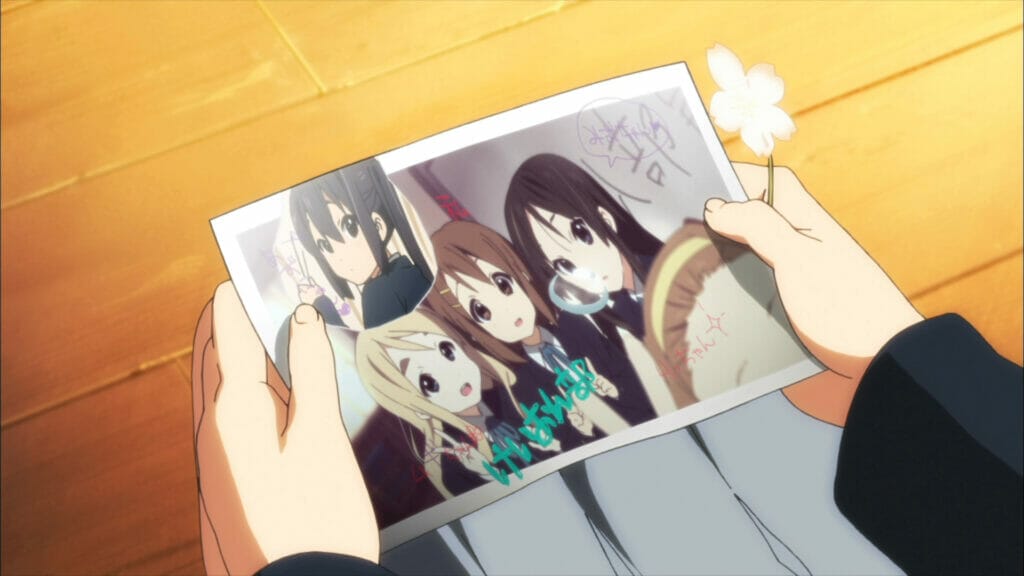
K-On! reminds me that I’ve come a long way. I didn’t know what anyone else thought about K-On! when I watched it; I just appreciated it for what it was. It took me years, but now I have plenty of friends who feel just as strongly about K-On! as I do, and I generally see far more praise for the series. We don’t all share the same connection to music, and I don’t see myself in a band any time soon, but I’ve talked to so many people who’ve each got something entirely different from the series. I believed in K-On! even when I couldn’t find anyone else who felt the same, and the acclaim the series gets today fills me with great joy.
I don’t have the energy to fend off every bit of criticism that I see directed towards the things that I like, and I have a tendency to be upset by it even when I tell myself there’s no need to be. Though I find there’s few things more rewarding than standing by a series you believe in, and finding that others feel the same as you. The rise of moe anime, the very thing that many said would turn people away from anime, was my introduction.
Ten years later I still couldn’t tell you what moe means, or what the difference is between a show that’s “boring” or one that’s “healing”. All I know is that this moe anime absolutely rocks. That’s a terrible pun, but how else can I put it when it’s the reason I’m still watching anime today? Even when it was a divisive newcomer, I was confident that K-On! would be respected for what it achieved. I’m deeply grateful for K-On!’s modern status as an adored classic, and I’ll be loving it for years to come.


